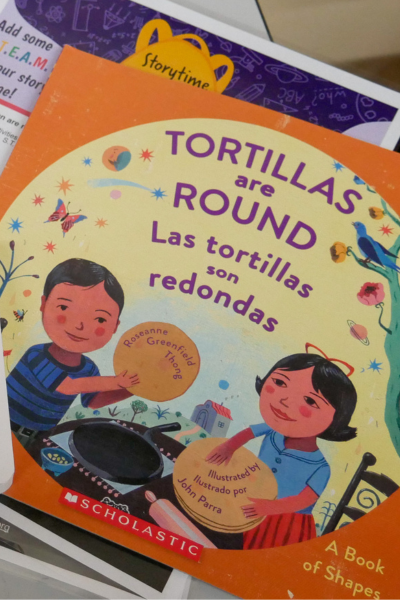Culturally Sustaining Story Time
Join the conversation

Story Time Practices: A Self-Reflection Exercise
INSTRUCTIONS: Review the paired statements and slide the blue dot to the point along the spectrum that you believe best reflects where your practice is currently. Please be mindful that there are questions related to your personal identity and how you are showing up in the library system and questions that are related to the culture of your library.
Please see the glossary below for full descriptions of terms used in the self-reflection.
Glossary
Click the terms below to learn more.
Anti-Racism
“Antiracism” is “the work of actively opposing racism by advocating for changes in political, economic, and social life. Anti-racism tends to be an individualized approach, and set up in opposition to individual racist behaviors and impacts.” (Race Forward 2015)
Antiracism is an approach to racial equity that begins with the assumption that all races are equal and not in need of development as a whole. It suggests that racial injustices are a result of racist policies, intentional or unintentional, and that racial equity can only come through deliberate changes in political, economic, and social structures. Antiracism implies something beyond being “not racist”, and requires a more active opposition to racist structures through action.
BIPOC
“BIPOC” stands for Black, Indigenous, and People of Color.
DEI
“DEI” stands for Diversity, Equity, and Inclusion.
Diversity
“Diversity” can refer to a range of differences between people that may include race, gender, sexual orientation, class, age, education, religion, language, culture, and physical or cognitive abilities. It may also include different ideas, perspectives, and values. In the context of institutions, organizations, or communities, it may refer to representation of these differences within the group, the active presence of different voices and perspectives, or the valuing of these differences as part of the culture. It is a necessary, but not sufficient step towards “Equity”.
Equity
“Equity” means fairness and justice and focuses on outcomes that are most appropriate for a given group, recognizing different challenges, needs, and histories. It is distinct from diversity, which can simply mean variety (the presence of individuals with various identities). It is also not equality, or “same treatment,” which doesn’t take differing needs or disparate outcomes into account. Systemic equity involves a robust system and dynamic process consciously designed to create, support and sustain social justice.” (Race Forward 2015)
Inclusion
“Inclusion” means an environment in which all individuals are treated fairly and respectfully; are valued for their distinctive skills, experiences, and perspectives; have equal access to resources and opportunities; and can contribute fully to the organization’s success. (Adapted from Society for Human Resources Management, Hewlett Packard, and Ferris State University)” and (Office for Diversity, Literacy and Outreach Services 2017)
Inclusion means being included within a group or structure. More than simply diversity and quantitative representation, inclusion involves authentic and empowered participation, with a true sense of belonging and full access to opportunities.” (Race Forward 2015)
* Glossary terms and definitions from “Cultural Proficiencies or Racial Equity: A Framework” by the Joint American Library Association/Association of Research Libraries, August 2022.
Have you watched our Story Time STEAM in Action/en Acción videos? Would you like to try some of these STEAM powered approaches in your own story time? We encourage you to take the brief self-reflection above to learn more about the story time practices at your library. Please pass this resource to your colleagues.